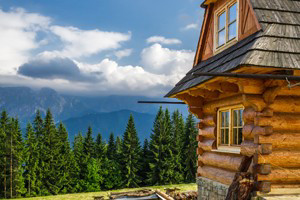- The South Fork is one of the top wild fisheries in the country, especially for wild cutthroat trout.
- With the Palisades tailwaters, the Canyon and open plains, the South Fork has a taste of everything.
- Fish aren’t all you’ll see here – wildlife is diverse, abundant and all around.
Overview
The South Fork of the Snake River is well-known as one of the best wild trout fisheries in the U.S., and for good reason. Wild rainbow, brown and (most notably) cutthroat trout thrive along this waterway, fulfilling any angler’s fantasy of a river where you can fish from gravel bars or drift boats and pull in over 20 trout in a day (with plenty sizing in over 20 inches long) all while enjoying the spectacular scenery that Southeastern Idaho is famed for.
Location
The 64-mile long South Fork of the Snake River runs northwest from the tailwaters of the Palisades Reservoir near Alpine, Wyoming and through Swan Valley until it joins with Henry’s Fork between Rexburg and Rigby, Idaho.
Seasons
While the best dry fly season on the South Fork of the Snake River is from July to August (early July is often marked by some incredible hatches), good fishing can be found year-round. Once summer turns to fall and temperatures cool, many of the visitors head home and local hunters put their rods away for the hunting season. River flow also drops in the fall, leaving more of the river accessible by wading, and the reduced number of anglers means that it’s possible to spend hours exploring the river by foot without seeing another soul. October in particular can have excellent fishing, although the weather can be rather unreliable.
Winter fishing is not as common on the South Fork, although it’s not unheard of to see a lone angler casting into unfrozen spots of the river. Parts of the South Fork do close to fishing during the winter, so be sure to check before you go.
Fishing doesn’t really pick back up until June or July, when high flows make wade fishing difficult – float trips are usually more common from June through September.
The Sections of the South Fork
The first 12 miles downstream from Palisades Dam is the most accessible stretch of the South Fork. Although this stretch sees the most angler traffic (due in part to the easy access), it is still filled with fish and produces large catches every year. Enjoying the scenery here is no problem, as the nearby mountains grace the landscape with their untamed beauty.
The Canyon begins at the Connant Boat Ramp, 12 miles downstream from Palisades Dam, and runs 24 miles down to the Cottonwood Boat Ramp. This narrower section of the South Fork features fish-filled waters surrounded by tall canyon walls spotted with vegetation and rock. The Canyon can be split into an upper or lower day trip or done as a two-day overnight float trip.
Below the Canyon, the South Fork leaves the mountains and enters flatter farmland that, while very different from the mountains upstream, still provides both incredible views and fantastic fishing before the river joins with the Henry’s Fork.
Wildlife
You’ll have no shortage of spectacular sites while fishing along the South Fork of the Snake River. In addition to the mountains, towering canyon walls, broad plains and cottonwood forests lining the banks, you’ll be treated to a rich diversity of wildlife. Bald eagles and osprey nest nearby; whooping cranes fly overhead; and moose, deer and even bear are often seen in the riparian area around the river.
Restrictions
Since the South Fork is a wild fishery dependent on natural reproduction there are a few special regulations. In addition to the six trout limit, all 8-16 inch fish must be released and only two non-rainbow trout can be kept.









